
I spent the weekend at a cabin with some of my high school classmates. These are friends of mine that I've known for over 40 years. We walked around a little bit. We couldn't miss a tour of the nearby Jewish cemetery.

We are in the village of Hořepník. The village has less than 700 inhabitants. The nearest town is Pelhřimov with 16000 inhabitants. We are about 120 km from Prague, the capital of the Czech Republic, in the heart of Europe.

Although the village is small, it has several parts with local names. This part is called Palestine. It used to be a Jewish ghetto with a synagogue. The ghetto was abolished at the end of the 18th century, but religious Jews still needed to live within Sabbath distance of the synagogue, so they stayed here.

The oldest grave with a decipherable inscription is from 1649. The youngest is from 1942. There are about 250 graves here.
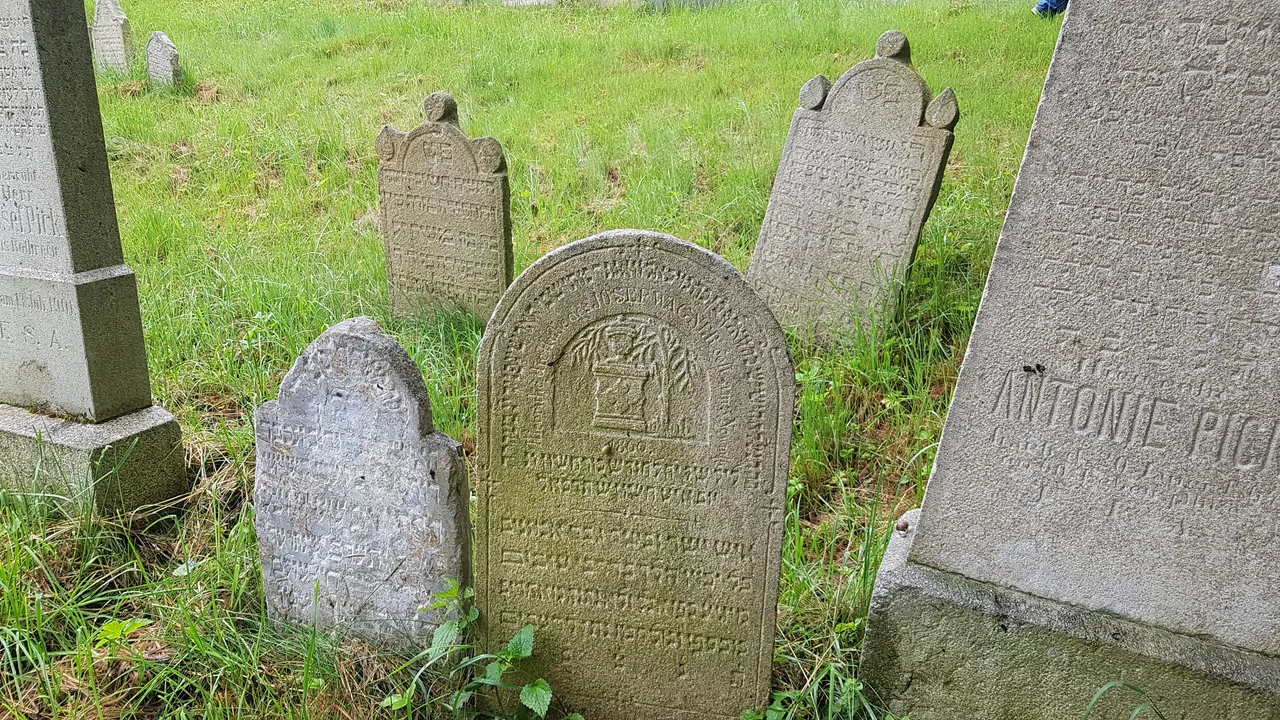
The oldest graves bear inscriptions only in Hebrew. Since the beginning of the 19th century, German has been added to Hebrew. On some later graves there are only German inscriptions. From the middle of the century onwards, we also find Czech and Hebrew inscriptions. Then only Czech. Finally, Hebrew-German-Czech or just German-Czech. The cemetery thus mirrors the complex coexistence of Czechs, Germans and Jews in this country.

Cemeteries are generally sad places. But I find this one particularly sad. Pious Jews visiting the graves bring small stones to the graves. It's a custom from a time when Jews lived and buried in the desert. The graves were covered with stones because of the animals that dug up the dead bodies.
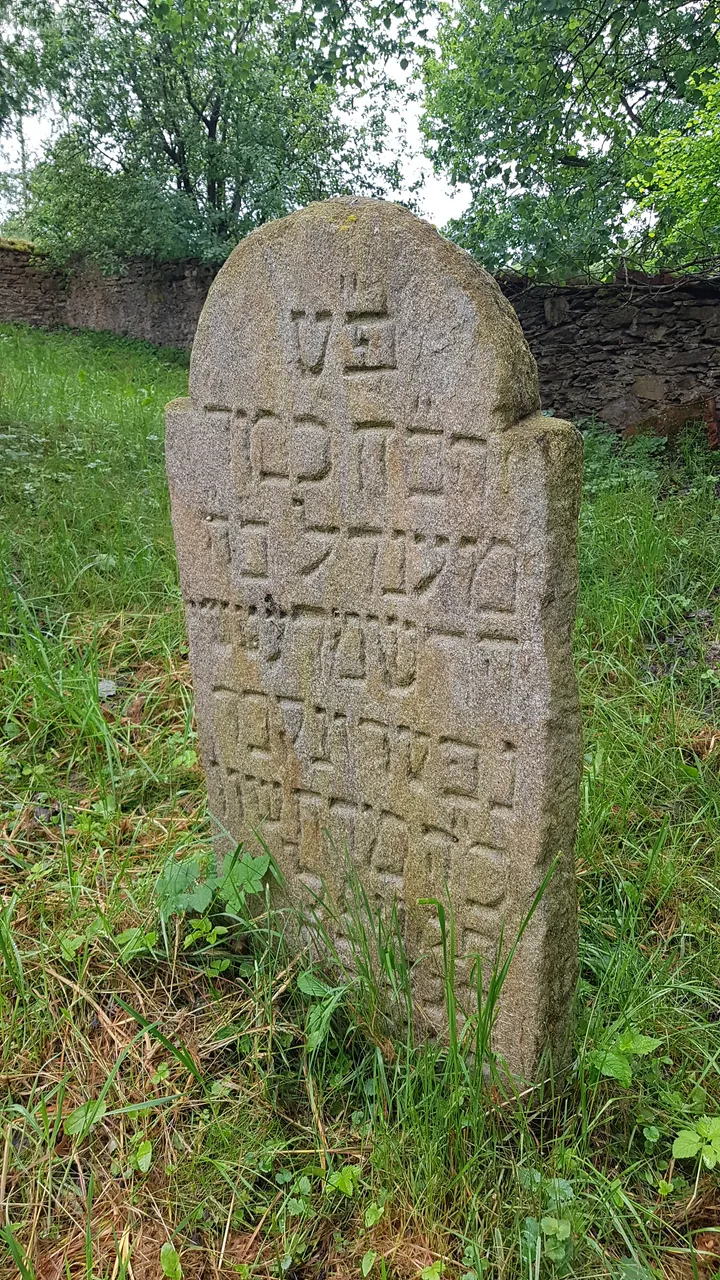
But in this cemetery I didn't see a single small stone on the grave. That can only mean one thing. In this place, Hitler's plan succeeded. No one survived to remember and pray for their relatives.

It can be seen that the cemetery was to serve for a long time. The cemetery is large enough to accommodate many of the deceased. When it was founded, the Jews were by no means an equal population and undoubtedly paid a high price for the land. They would not have bought a large plot if they were few.

The morgue doesn't look bad from the outside. But it's worse on the inside. The photo was taken through a broken window.
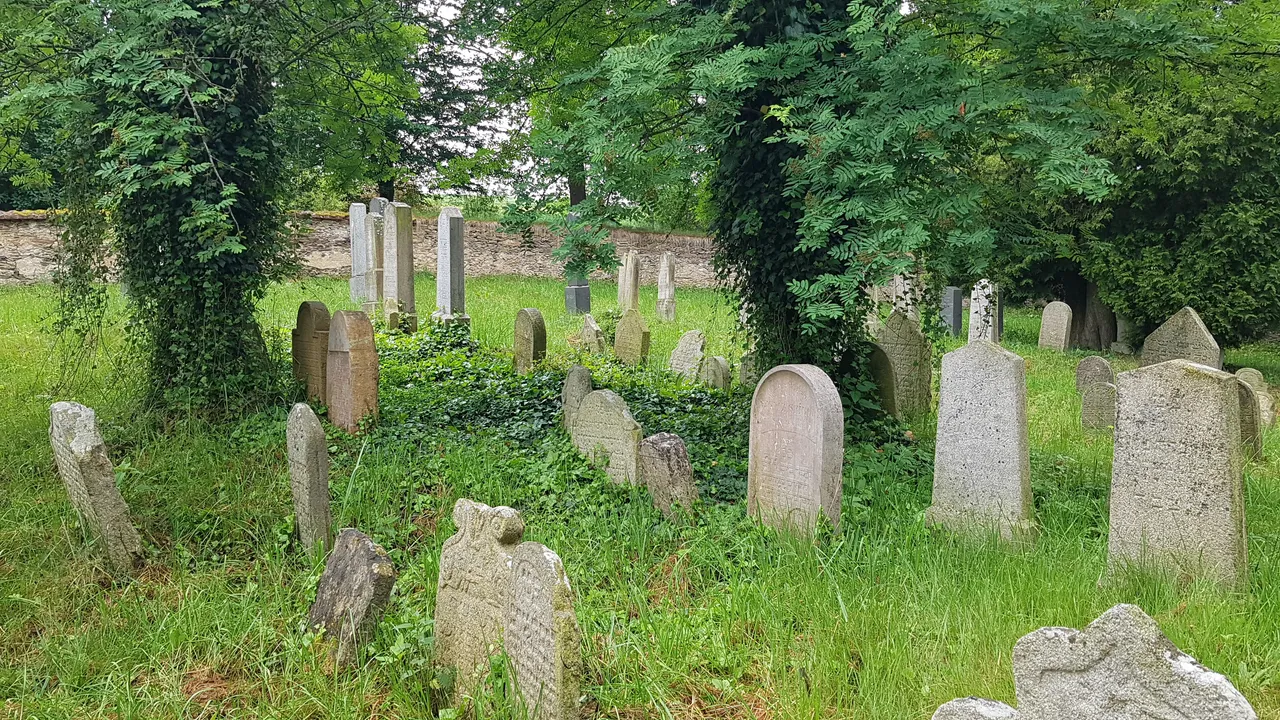
Jewish cemeteries are usually locked and the key is usually borrowed from the Jewish community or the municipal office. But this cemetery is unlocked. It has a broken wall and it would be pointless to lock it.
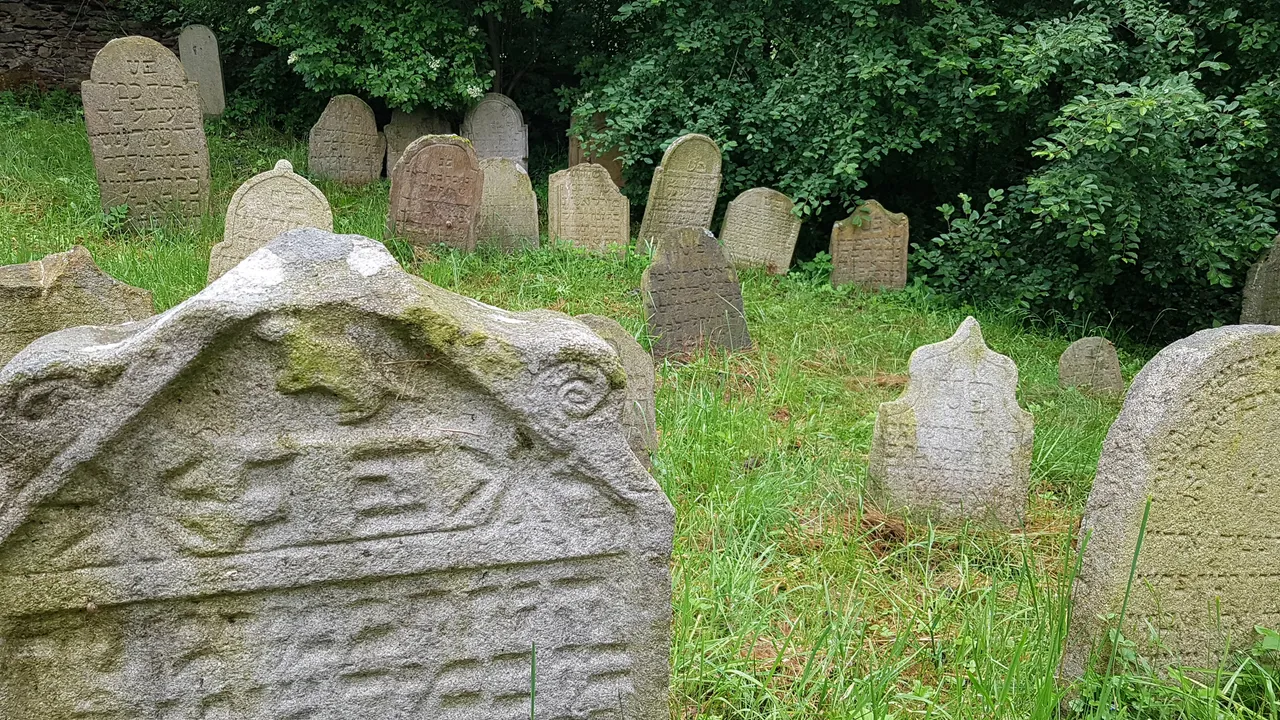
I have visited very many Jewish cemeteries in my life. But I've never seen this symbol before. I have much to study.

I took many photographs here, of course. This one is to demonstrate the great slope of the cemetery. The only land available for purchase for the Jews was practically unusable, which nobody wanted.

The town of Hořepník tries to take care of the cemetery. But its financial resources are not unlimited.
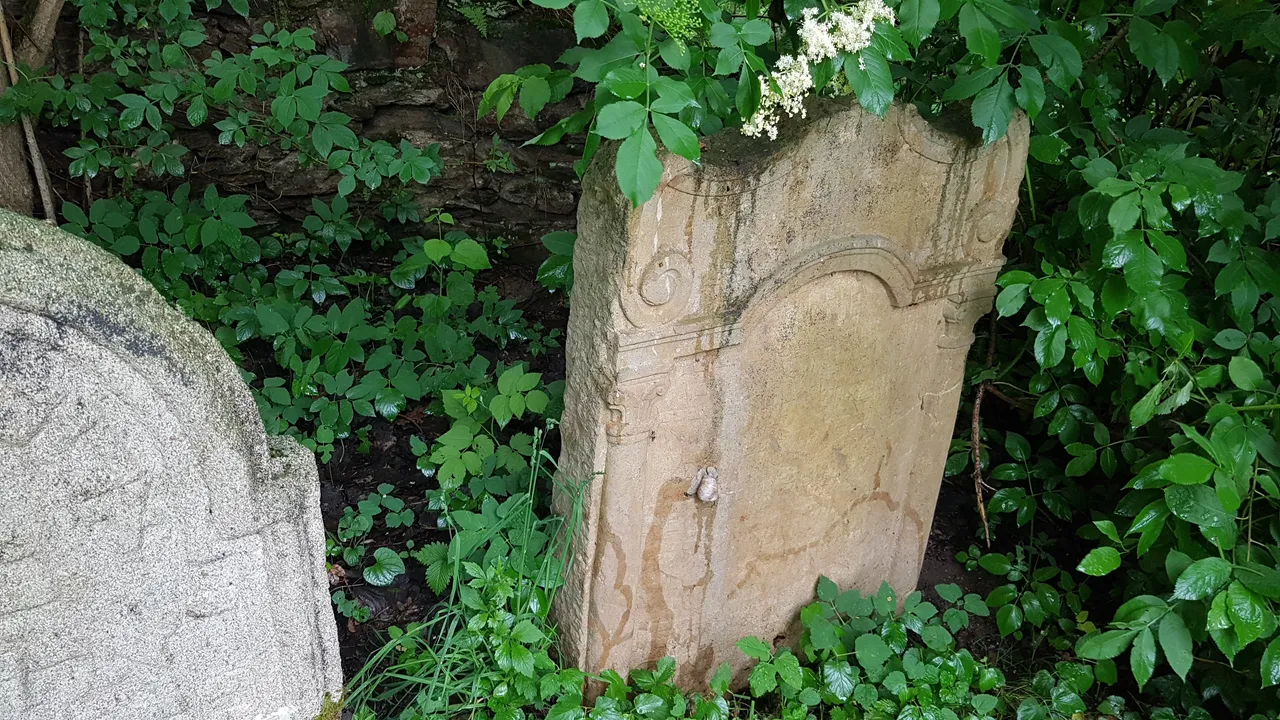
If nothing extraordinary happens, in time nature will prevail over man's work here.

In time, the cemetery will be overrun by snails.

I'm not Jewish and I don't often wear a head covering. However, I almost always have this cap with me in case of a visit to a Jewish monument.

Židovský hřbitov v Hořepníku
(Český a anglický text jsou si jen volně podobné. Proto doporučuji si přelouskat i ten anglický strojový text, pokud byste neměli dojem, že u toho zvlášť trpíte.)
Moje výjezdní setkání se spolužáky nebylo jen o alkoholu a řečech. První večer jsme naplánovali, co všechno bychom mohli vidět.
Předpověď počasí byla hrozivá. Naštěstí se absošmoulně nenaplnila. Bylo krásně. Měli jsem štěstí... Předpovědi se teď až příliš často nenaplňují. Už i pro meteroology je počasí nevyzpytatelné.
Ale vzhůru na hřbitov! Hořepník je dnes malá vesnice, ale bývalo líp. Což si můžete najít na Wikipedii nebo kdekoliv jinde. Je to kousek od Pelhřimova.
Bývala tu kvetoucí židovská komunita. Josef II. zrušil ghetta. Dost Židů se odtud vystěhovalo. Ale dodržovat všechna ta přikázání, příkazy a zákazy, to je mimo komunitu téměř nemožné. Židosvstvo se pomalu asimilovalo a stávalo se celkově nábožensky vlažnějším a vlažnějším.
Nebudu tu psát o Herzlovi, Dreyfusovi a Hilsnerovi, to buďto víte, nebo si můžete opětovně dohledat. Důsledkem byla vlna sionismu. Který zasáhl všechny židovské obce, i tu v Hořepníku. Lidé odcházeli do Svaté země.
Jak jsem zmínil v englickém textu, na hrobech neleží kamínky. Vypadá to, že nemá kdo oplakávat mrtvé. Nevím, jestli se po válce z koncentráku někdo vrátil. Rozhodně tu nezůstal a nevrací se ani on, ani jeho potomci. Pak by se to tady Hitlerovi podařilo...
Zbytek dorazili komunisté. Zbořili nepoužívanou synagogu... A tak navzdory snaze obce, hřbitov postupně pohlcuje příroda. Šneci zejména.

Želen... Předpokládám, že čeština nebyla tzv. jazykem obcovacím této rodiny. O to je sympatičtější, že se k ní tímto ještě za monarchie přihlásili.
A to je tak asi všechno, co jsem chtěl dnes napsat... Mám ještě desítky nepoužitých fotek. Některé uplatním i v Actifitu, i v #arountheworld. Nestudoval jsem to, ale mám dojem, že Pinmappláci už nejedou. Škoda. Ale nic netrvá věčně.
